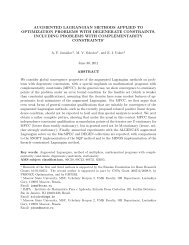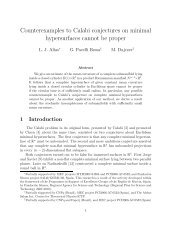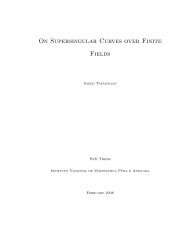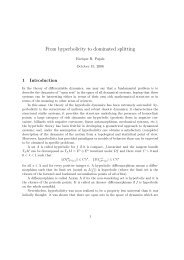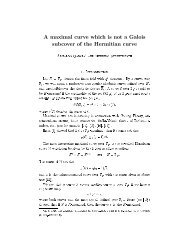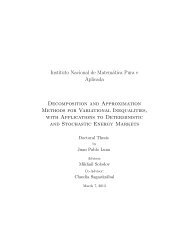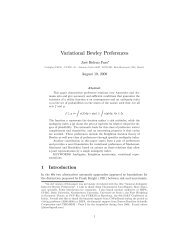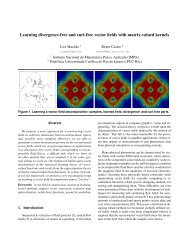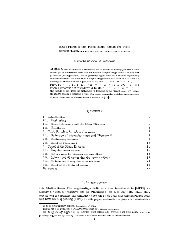a reduced model for internal waves interacting with submarine ...
a reduced model for internal waves interacting with submarine ...
a reduced model for internal waves interacting with submarine ...
Create successful ePaper yourself
Turn your PDF publications into a flip-book with our unique Google optimized e-Paper software.
0.6<br />
0.4<br />
0.2<br />
η<br />
0<br />
−0.2<br />
60<br />
50<br />
40<br />
30<br />
20<br />
t<br />
10<br />
0<br />
0 10 20 30 40 50 60<br />
ξ<br />
Figure 4.5: Fission of the wave on a periodic domainΠ[0, 16π].<br />
and the amplitude is half of the original one, see Fig. (4.5). This is consistent<br />
<strong>with</strong> D’Alembert’s solution <strong>for</strong> the wave equation. When the two travelling <strong>waves</strong><br />
coincide (overlap) in space and time the initial condition is recovered <strong>with</strong> an<br />
error of 0.00374 by the RK4 method <strong>with</strong> N = 512,∆ξ = 2l/N = 0.098175,<br />
∆t = ∆ξ = 0.098175, see Fig. 4.6. This is a nice consistency check <strong>for</strong> the<br />
numerical conservation of mass of two <strong>waves</strong> colliding.<br />
Example 4.3. Let us study the numerical solutions <strong>for</strong> the LFM <strong>for</strong> the dispersive<br />
caseβ0. The initial value problem <strong>for</strong> this case can be solved explicitly by<br />
means of Fourier Series as follows.<br />
Consider the initial value problem (IVP) <strong>for</strong> the LFM on the periodic domain<br />
69



